Croatians in America - photo collection by Vladimir Novak, part 1
http://www.croatia.org/crown/articles/9421/1/Croatians-in-America---photo-collection-by-Vladimir-Novak-part-1.html
By Prof.Dr. Darko Zubrinic
Published on 01/7/2008
 | Mr. Vladimir Novak, on the left with Alma Franulović Plančić in Croatian national costume, is well known for his rich collection of photos related to life and work of Croatians in America, collected over several decades in the USA. We start with a series of articles, presented for the first time exclusively for the readers of CROWN. |
Croatian Energy, page 1
Contents
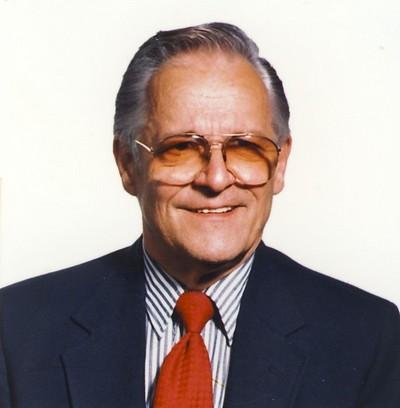
Vladimir Novak

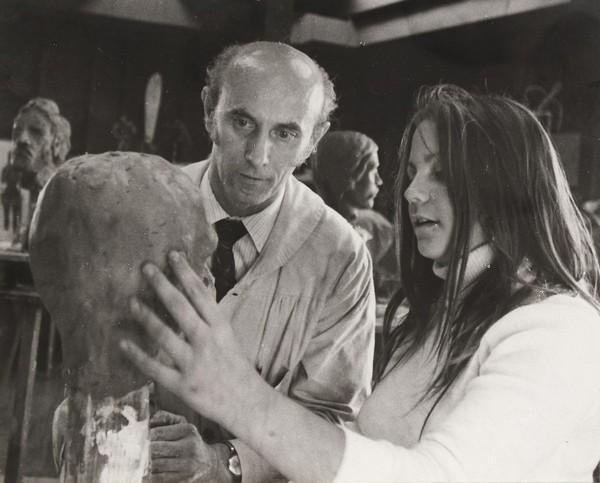
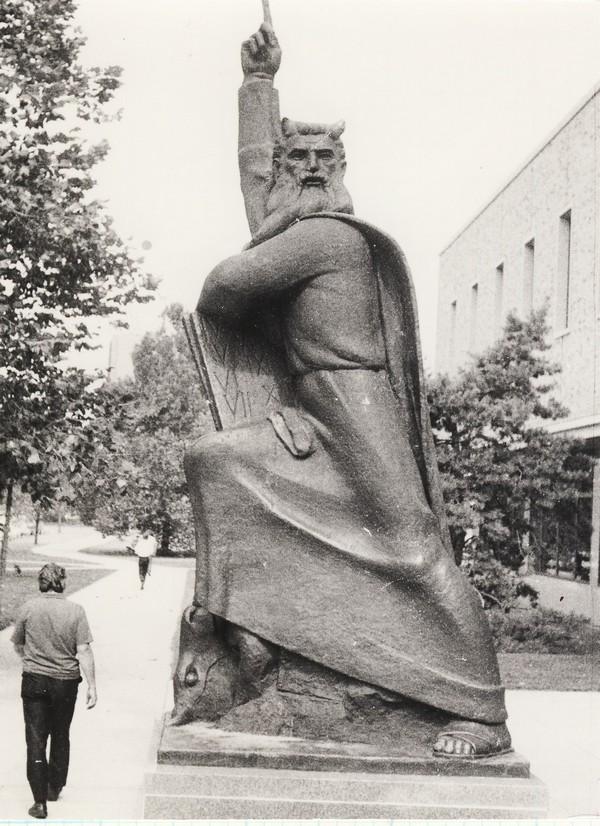
Moses, Notre Dame, Indiana, by Josip Turkalj
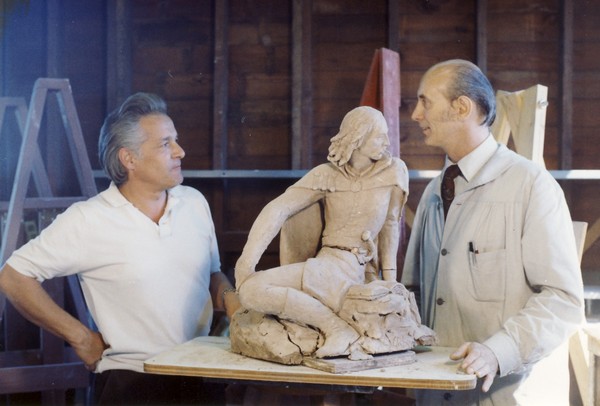
Vladimir Novak with Josip Turkalj (Joseph Turkaly) in his studio in Cleveland,1971
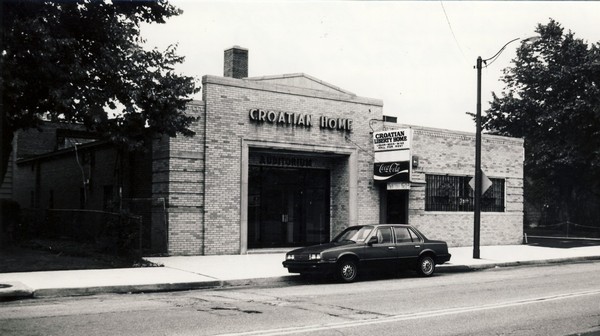
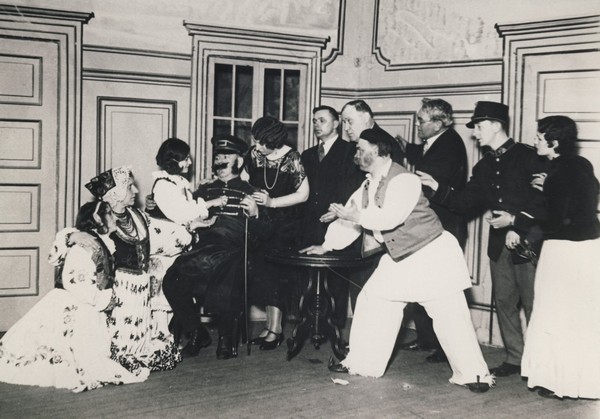
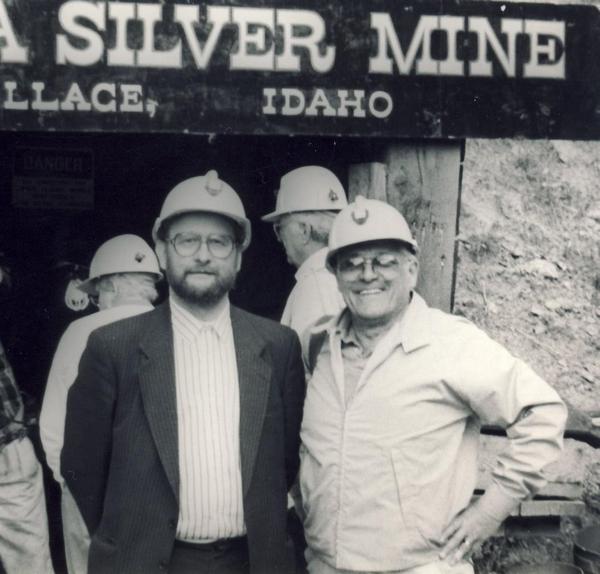
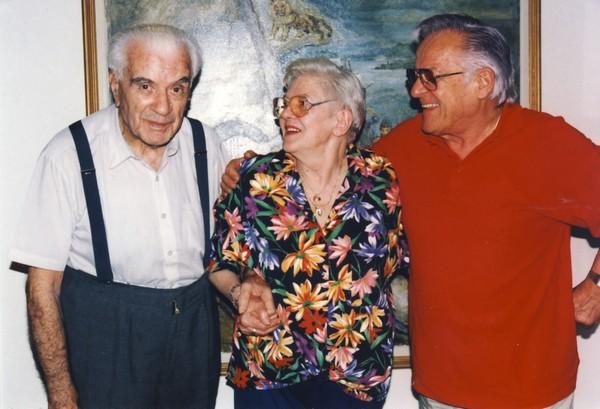

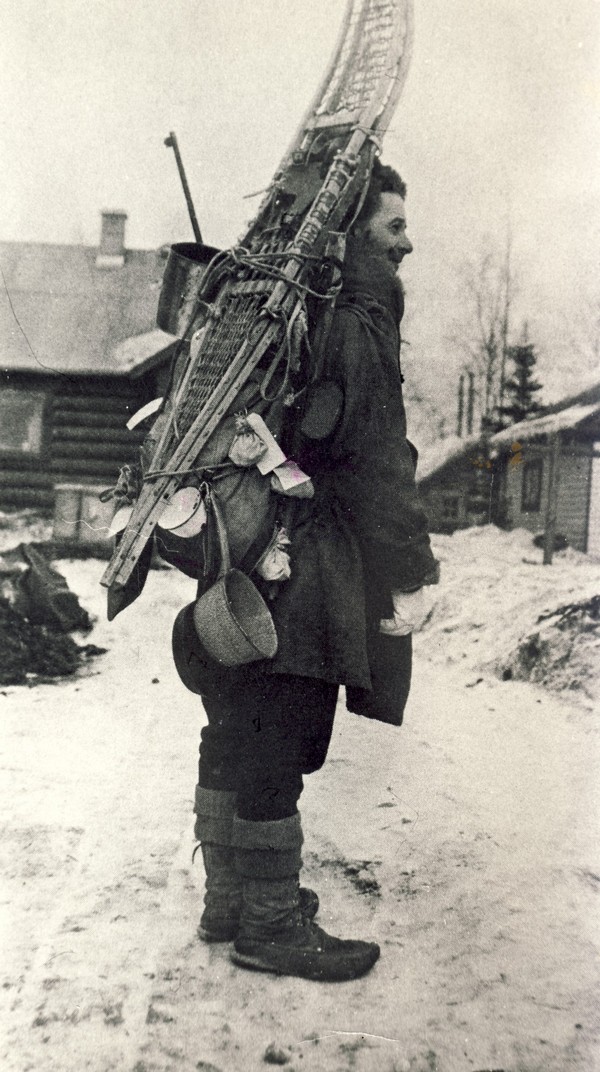
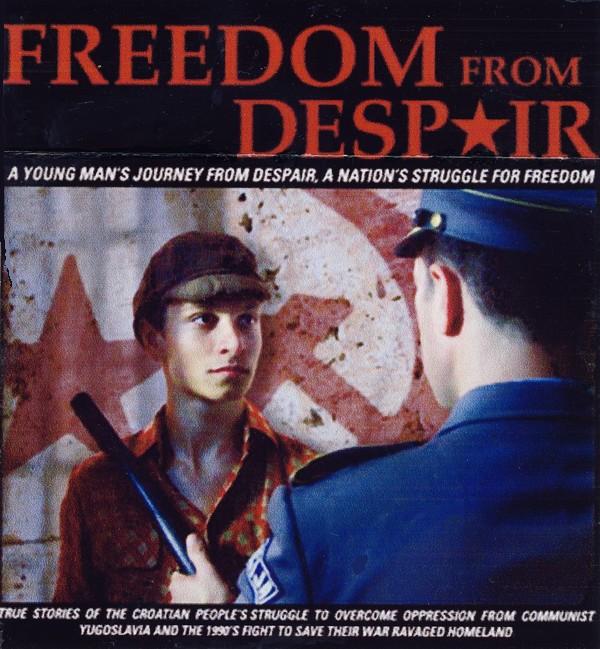

Brenda Brkušić

The infamous Goli otok (Naked island)
Copyright 2008, photos by Vladimir Novak. All rights reserved.
Please, go to the next page below.

Vladimir Novak
America is today the most important factor in creating Croatian democracy - the best school for Croatian Energy. |

Vladimir Novak with Alma Franulović Plančić in Croatian national costume
| Vladimir Novak was born in 1928 in Varaždin, Croatia. At the age of 14 he joined the Military Academy "Zastavnička škola", which was the most elite military unit during the Independent State of Croatia. He graduated from Real Gymnasium in Varaždin and in 1948 he studied the History of Arts at the University of Zagreb and later at the Motion Picture Academy in Belgrade. He left Yugoslavia in 1959 as a political refugee and lived three years in Belgium. He arrived in the U.S.A. in 1962 and received his citizenship five years later. While living in Los Angeles he organized the Croatian Radio Program in 1963 (it is still on air), produced the very first Croatian flag with the printed chekered emblem, and organized the first and only rasing of the Croatian flag at the Los Angeles City Hall. During the Entire 36 years of his life in the exile, he had been very active in Croatian and American politics and received many special commendation awards and honours. He has been self-employed in commercial photography and advertising and he won several top awards for his work. His credits include photographs of some noted personalities, such as the United States President Ronald Reagan, general Omar Bradley, admiral dr. Uslyssess Sharp Grant IV., hotel-magnate Conrad Hilton, famous singer John Elton, and many others including motion picture stars. However, he was mostly involved in promoting the Croatian cause. Since 1970 Vladimir Novak also collected and restored over 4000 valuable photographs dealing with Croatian immigration in America. Fortunately, he was able to bring them to Croatia in early 1994, when he retired and returned to his homeland. |

| Above Josip Turkalj's studio on the campus of Gilmour Academy in Gates Mills, a suburb of Cleveland, Ohio. He taught here fine arts and sculpture for many years after moving here from Notre Dame University where he was assitant to famous Croatian sculptor Ivan Meštrović. |

Moses, Notre Dame, Indiana, by Josip Turkalj
| Above Turkalj's 18 feet bronze statue of Moses in front of the Notre Dame Library in South Bend, Indiana (1963). Josip Turkalj was born in Rakovica, Croatia in 1924. He finished his studies in Yagreb and Academz delle Belle Arte in Rome. He came to America in 1957 and had impressive exhibitions throughout United States, and many of works of art are in public and private collections also in Canada, Italy, Croatia and Argentina. Josip Turkalj died in 2007 at his home in Cleveland Heights at the age of 82. |

Vladimir Novak with Josip Turkalj (Joseph Turkaly) in his studio in Cleveland,1971

| Above The Croatian Liberty Home Inc., in the Collinwood (Cleveland). It was built and managed by the C.F.U. Lodge 235 and it was a center for Croatian activities from 1950 to early 1980's when work on the new Home began in Eastlake. |

| Above Scene from Graničari (The Frontiersmen) performed in 1931 by members of the drama group Abrašević. The drama society was founded in 1921 and was active until 1961. Its director was Joe Kovačević. |

| |

| Above Vladimir Novak with Josip Crnobori (1907-2005, on the left), Croatian painter in New York, and his wife. Photo taken in Zagreb. |

| October 15th, 1950: Grand opening of the Croatian Home at 4033 main Street in East Chicago, Ind., built by a group of Croatians of Harbor area, where there are the still mills. In the center (in white suit) is Frank Migas, mayor of East Chicago, on his left is John Vukovic and on his right is John Ceperich, the officers of the Croatian Home organization. This organization was very active for the first 25 years, then slowly declined as the younger Croatians moved to other areas. Finally, in 1981 the building was sold. |

| Above Paul Draženović, pioneer and gold miner born in 1891 in Croatia, the region of Lika. He came to Alaska in 1911. During many rough and arduous years he accumulated several smaller gold mines. From 1967 he was spending his remaining years in a Pioneer's Home. |

| FREEDOM FROM DESPAIR is a feature length documentary that through first hand interviews, stock footage, narrative recreations and news reels shot by Brenda Brkušić, remarkable American Croatian film maker. It is a shocking truth that has been silenced within a generation of survivors for the past 50 years. The film is also depicting the struggle for independence in the early 90's. |

Brenda Brkušić
| Brenda was born in Chicago and moved to Los Angeles where she received her Bachelor Fine Arts degree. At the age of 22 she produced and directed her multi-award winning beautifully done movie Freedom from Despair. In 2005 her hard work was recognized also by the US Congress and she was honored in the United States House of Representatives. |

The infamous Goli otok (Naked island)
| The island of Goli Otok, one of concentration camps where thousands of Croatians as well as others were persecuted and killed during the Yugoslav communist regime. |
Copyright 2008, photos by Vladimir Novak. All rights reserved.
Please, go to the next page below.
Croatian Energy, page 2
Contents


Horsewoman by Antun Agustinčić, in front of the main building of the UN, New York

Horsewoman, UN
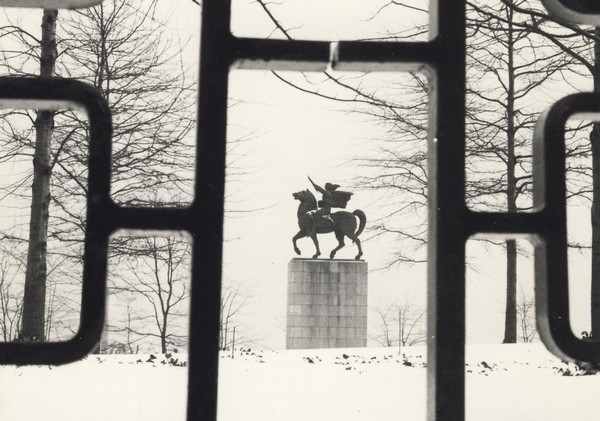
Horsewoman, another view
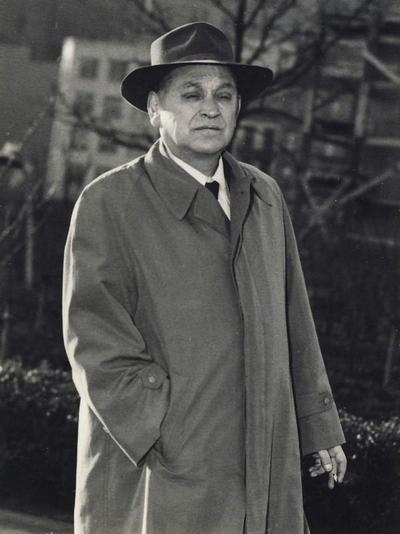
Antun Agustinčić, Croatian sculptor, creator of the Horsewoman
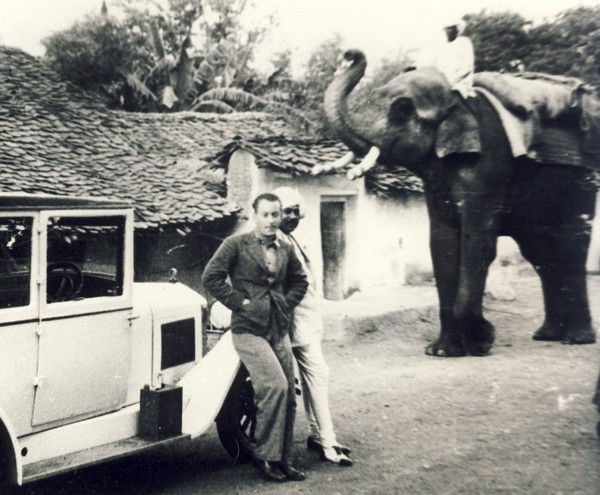
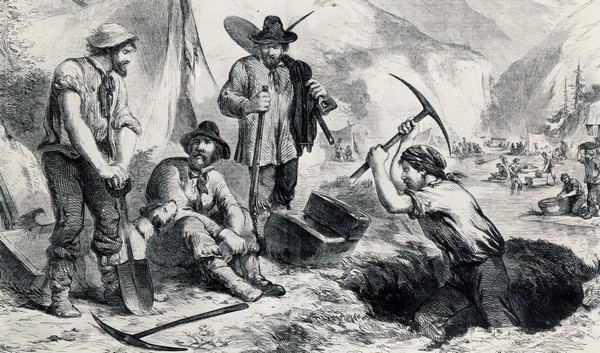


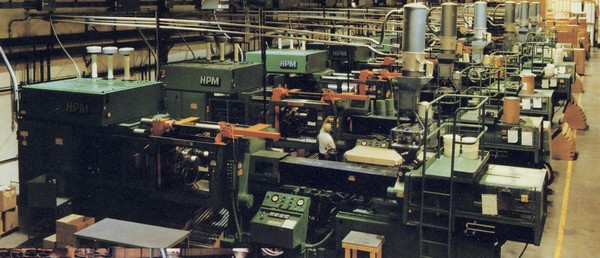

Please, go to the next page below.
| The statue in the gardens of the United nations is the work of a Croatian sculptor Antun Augustinčić. The 16 feet high bronze statue stands on a 26 feet high pedestal faced with blocks of rose marble from Croatia. |

Horsewoman, UN

Horsewoman, another view

Antun Agustinčić, Croatian sculptor, creator of the Horsewoman
| Sculptor Antun Augustinčić (1900-1979) studied art at the Zagreb College of Arts and Crafts. Additional studies he received under Ivan Meštrović. He studied also in Paris and exhibited there in 1926 followed by exhibitions in London, Zagreb, Barcelona and in Split. He developed a reputation as a master of monuments, especially equestrian, winning public tenders for monuments at home and world wide. |

| Joseph Hitrec, recipient of Harter's literary prize, with private secretary of a maharadja in India, before going to hunt. Photo courtesey Dr. W. Hitrec. |

| Joseph Kralj (Joseph King) from Mrkopalj, in Gorski Kotar, who left home in 1852 with his godafther, boarded a ship in Bremen and several weeks later arrived in New York. Unable to find work there, the two men traveled west in 1853 to Duluth, Minnesota. That spring they met three other Croatians from Novi Vinodolski, one of whom suggested they all go to California to seek gold. Kralj and his companions joined a covered wagon caravan which was attacked by Indians. Many of the party were killed in the attack, including two of the Croatians from Novi Vinodolski, who were skalped. Only Kralj and one other Croatian made it to California. In 1862 Kralj left for Sierra Nevadas to search for gold. Fully aware of the risks involved, he deposited his journal, documents and money (about $2000) at the Austrian consulate in San Francisco. Kralj never returned to San Francisco, nor he did send any message. After three years of waiting the consul sent all his belongings to his family in Croatia. His account of a Croatian adventurer vividly captures the experiences of only a few of the thousands of Croatians involved in the search of gold and riches in the rugged and wild American West in the nineteenth century. |

| Above Founder and Chairman of Corporation Ilija Letica, immigrated to US in 1957. He was born in Duvno. |


| Above One of thirteen Letica's plants throughout the United States located at Jean, thirty miles south of Las Vegas, Nevada. Beside it has licensees in Puerto Rico and throughout the world. The company headquartered in Rocherster, Michigan, is manufacturing various plastic products, mostly pails used as household containers for painting, car washing purposes, as shipping containers by construction, food production and other major industries. |

| Louis Svećenski was born in 1862 in Osijek, Croatia. In 1885 he received contract from the Boston Symphony Orchestra as the first violinist, and thus came to America. For thirty-three years he played the viola in the famous Kreisel Quartet. Later, he was director of New York's Institute of Musical Art and also one of founders of Curtis Institute of Music in Philadelphia. He died in 1926. |
Please, go to the next page below.
Croatian Energy, page 3
Contents

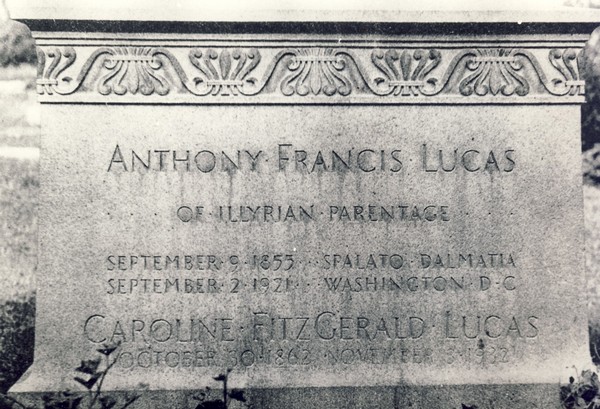
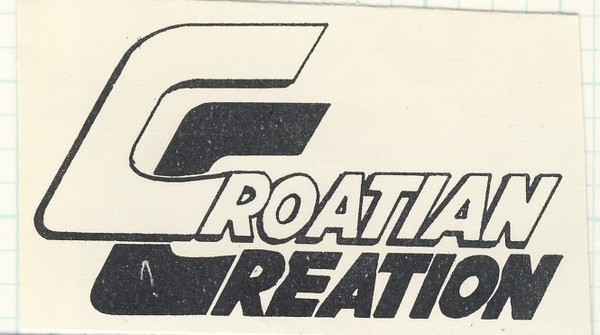
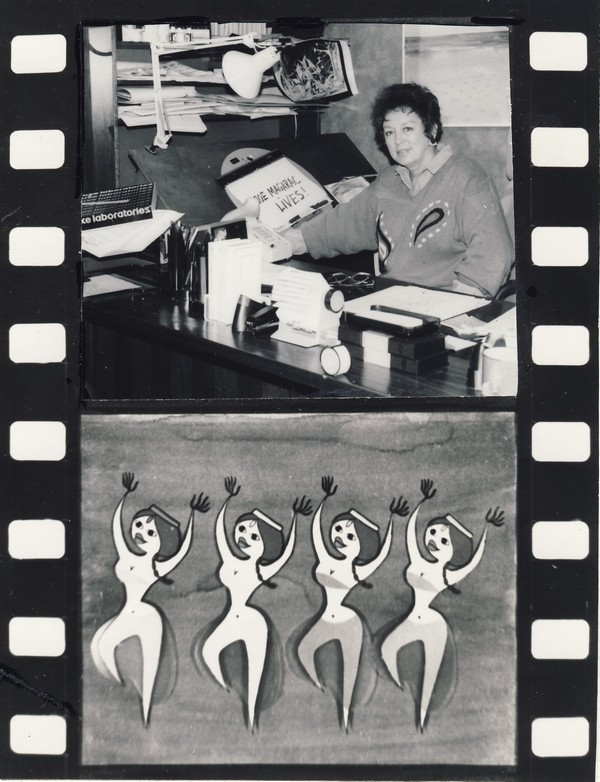
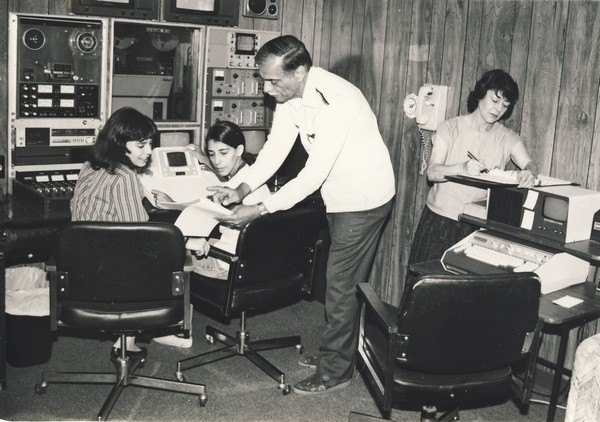
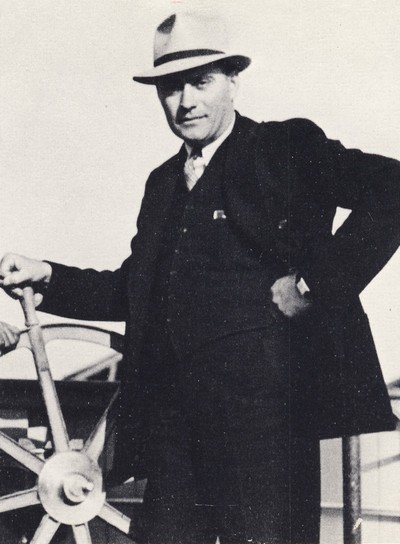
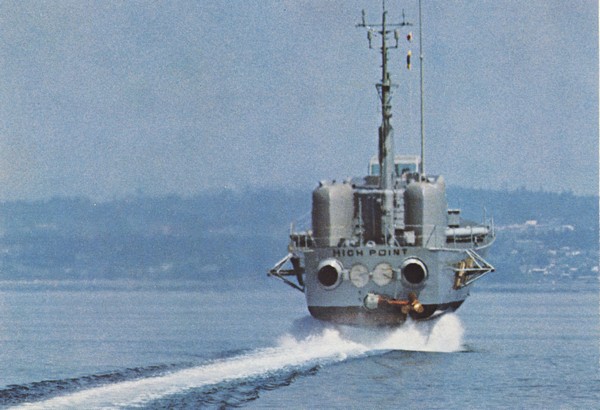
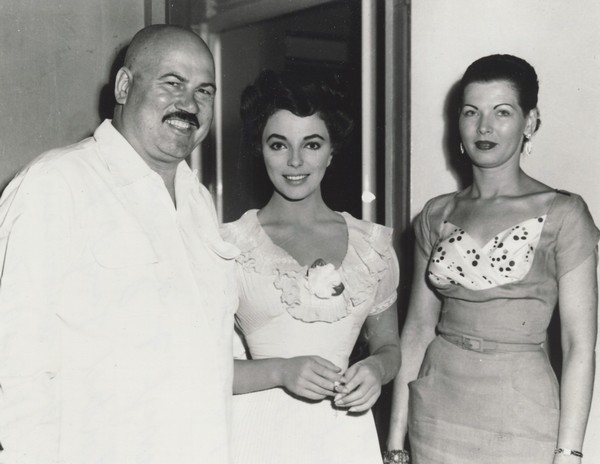
Please, go to the next page below.

| Anthony Lucas, born in Split 1855, discovered the first major gusher in Texas, The Lucas gusher. He died in Washington in 1921. Above 18 m high granite obelisk, built in honour
|

| Tombstone at the grave of Captain Anthony F. Lucas, in Rock Creek Cemetery, Washington, D.C. Photo by R.F. Perkins (The American - Croatian Historical Review, July 1946, p. 11). As to his nationality, it is often mistakenly described as Austrian, and sometimes even Italian (like in Who is Who in America, where there is also another mistake - that he was born in Trieste). On his grave in Rock Creek, Washington, he is said to be of Illyric origin, where Illiric is a standard name for Croatian. |


| Marija Miletić began her career at Zagreb Film of Croatia. She continued on at Hanna-Barbera studio in Hollywood, upon invitation from Bill Hanna. She worked there as an animator, designer and also a director and producer, which roles she also held at other studios such as DIC Marvel and Universal. Marija Miletić earned her Master's at UCLA in Theatre Arts, with the thesis about an American Legend, with roots in Croatian immigration, Joe Magarac which she plans to produce as a full feature film. |

| Another talented and professional family motion picture and TV production, specializing in commercials, advertising and documentary films is Teletechniques in New Orleans. This business started Paul J. Yacich (Jasic) who came to the United States from the island of Brač, Croatia. |

| Joseph M. Martinac, born in Sumartin (on the island of Brač, Croatia) arrived to United States in 1912. He came to Tacoma, Washington, with a determination to build boats. He learned his trade in his native country - Croatia. His original name was Joseph Mijich which for business reasons he changed to his family nick name, so the firm he founded in 1924 is known as the Joseph M. Martinac Shipbuilding Corporation. Quietly, it became a multy-million-dollar corporation. As an extremely talanted man he designed and built a multitude of vessels with uncompromising quality and for a diverse range of services. Martinac died in 1963. |

| Above The High Point, an experimental hydrofoil built for the US Navy as a joint venture with The Boing Company, Setttle, is shown here "flying" on her underwater wings in Puget Sound. Martinac engineering, design and fabrication produced this sophisticated vessel, the first of its kind over 100 feet long, built in the United States. From www.croatians.com, by Adam Eterovich: J.M. Martinac Shipbuilding Corporation has called the Thea Foss Waterway, Tacoma, Washington home for more than 70 years. Founded in 1924, by J.M. Martinac, a Croatian shipwright of unusual talent, the company is still family owned and operated. Joseph M. Martinac was born in Sumartin, Island of Brac, Dalmatia, Croatia. In 1912, he came to Tacoma, Washington with virtually nothing but a desire to build boats as he had learned to do in Europe. Now in its third generation of management, the yard is operated by Joe Martinac Jr., president of the family company. The founder's son, J.S. Martinac, remains active in the day to day operations as chairman. Originally the yard began designing and building wood-hulled salmon seiners for the local salmon fishing industry. A few of these vessels built in the 1920s are still in service today. These designs graduated into sardine seiners and eventually tuna vessels for the San Diego, California based West Coast Fishery fleet. While fishing vessels were the backbone of the business, the company also built a variety of vessels for the U.S. Navy including tugs, torpedo retrievers, and minesweepers. A few private yachts were built as well. A succession of highly successful steel hulled tuna seiners, designed and built by Martinac followed. J.M. Martinac and J.S. Martinac were instrumental in the pioneering efforts that were to revolutionize the methods of tuna fishing from hook and line to purse seining. With some 70 of these vessels constructed over the years and fishing in nearly every ocean, Martinac has been recognized worldwide as building the "Cadillac" of fishing vessels. The same skills and lessons learned in building these premier tuna clippers have also been applied to other types of craft. Whether it's tractor tugs in Hawaii or factory trawlers in Alaska, U.S. Coast Guard patrol boats or high-speed catamaran ferries, the Martinac standard of quality has never changed. The building of a ship requires the collective skills of all these craftsmen. "Even with all the modern equipment and computerization available today, there is still a great deal of personal craftsmanship required," says Joe Martinac Jr. "That's one of the things I love about the business and why we all feel such a sense of pride and accomplishment when a boat sails away for the first time. There's a real piece of you that goes to sea with it." Martinac has employed as many as 350 craftsmen during busy times to build boats up to 250 feet in length and 45 feet in beam, sometimes with four vessels under construction at once. His firm was the first to successfully convert a tuna bait boat into a seiner, a move that revolutionized the world tuna fishing industry. He was a personable man, he liked people, and they liked him. Martinac died in 1963, and this tribute was made to him by the Tacoma News Tribune: There are Navy admirals and enlisted men, fishing boat owners and crewmen, who will say Joe built boats with the best of them. Boats which contributed to the safety of the nation in wartime, boats which added to the economy of the nation in peacetime. He did it all quietly, by choice. Martinac's firm continues to carry on his fine traditions. The Martinac team of naval architects and craftsmen are prepared to meet these challenges and are pursuing a variety of new projects including Norwegian designed aluminum catamaran ferries, high tech tugboats for ship handling and renovations to some of the Washington State Ferry vessels. If all goes well, there may even be a few fishing boats in the future. It hasn't been the smoothest sailing in recent years, - says Martinac, "but we're still on course." (Internet) |

| Joe Marsh (Josip Marušić), a character actor with a record of 213 roles to his credit, poses with Joan Collins (center), while she was working on Daryl Zanuck's movie THE GIRL ON THE RED VELVET SWING. He appeared in many TV and theater shows and in more than 100 films with renowned stars as Judy Garland, Marlon Brando, Karl Malden, Peter Sellers, Burt Lancester, Rod Steiger and many others. In one film he played Nikita Kruschev. He also appeared as a wrestler in over 3000 mathches, a profession in which he remained for 28 years.  Source: www.mrclean.com "US" magazine carried a story in its issue of August 29, 1983 about Joe Marsh, because we can find him in all of the supermakets as MR. CLEAN (in Europe as MR. PROPER) on the plastic bottles with a sticker featuring a bust of a strong and muscular, but very noticeable bald man with arms crossed. That's Mr. Clean. His father, also named Josip, was born in Trogir, Croatia, and arrived in New York on ocean liner Roosevelt on June 24, 1910. Upon coming to America he married Marijana, who gave him a son on August 25, 1911, weighing 22 lbs. They named him Josip, which beacuse of his involvement in sports and film arena was shortened to Joe Marsh.  Mr. Clean in France: Mr. Propre |
Mr. CleanBy Vladimir NovakIn America, Canada and many other countries, in almost all of the supermarkets, you can find Mr. Clean products for cleaning floors, bathrooms, kitchens etc. They are usually in plastic bottles with a sticker featuring a bust of a strong and muscular, but very noticeably bald man with arms crossed. That's Mr. Clean. Many people buy and use this quality cleaning product, but many probably don't know that Mr. Clean is in fact movie star Joe Marsh, whose real name is Josip Marušić. "US" magazine carried a story in its issue of Aug. 29, 1983 about Mr. Clean. Of course, Josip also appeared in all TV commercials for Mr. Clean products. His father, also named Josip, was born in Trogir, Croatia, and arrived in New York on an ocean liner "Roosevelt" on June 24, 1910. He got a job at Republic Steel in south Chicago, where he worked for a $1 a day. Immediately upon coming to America, he married Marijana, who gave him a son on Aug. 25, 1911, weighing almost 22 pounds. They named him Josip, which because of his involvement in sports and film area was shortened to Joe Marsh. He appeared as a wrestler in over 3,000 matches, a profession in which he remained for 28 years. He played in more than 100 films as well as many TV shows and theatres. In one film he played Nikita Khruschev. His biography is very exciting and interesting. In his younger days he was associated with the famous Chicago Mafia men, Al Capone and Frank Nitti, and later with renowned movie stars with whom he later appeared in films. Among them were Judy Garland, Burt Lancaster, Marlon Brando, Karl Malden, Peter Sellers, Rod Steiger and many others. He loved to talk Croatian with your writer, a language he learned as a student in a Croatian Catholic School in Chicago. The above article was first published in 1988, a year before Joe Marsh's death in 1989. It was subsequently reprinted in Matica, Number 3, 1996. This is an English translation of the article. Translated from Croatian by Marko Puljić, St. Louis, 2008 From www.croatians.org, by Adam Eterović: MARUSICH-MARSH, JOE Wrestler-Actor The Company Logo and picture "Mr. Clean" on the well known kitchen cleaning product sold for years is actually Joe Marsh whose real name is Josip Marusic. His parents were born in Trogir, Croatia and immigrated to Chicago. His weight at birth was 22 lbs. He is a product of the Croatian Catholic School System in Chicago. Before making his Hollywood appearance, he participated in over 3,000 professional wrestling matches. He took the movie star name of Joe Marsh, and appeared in over 100 films as well as TV shows and theaters. In one film he played Nikita Kruschev. Joe Marsh has appeared with Judy Garland, Burt Lancaster, Marlo Brando, Karl Malden, Peter Sellers, Rod Steiger and many others. |
Please, go to the next page below.
Croatian Energy, page 4
Contents
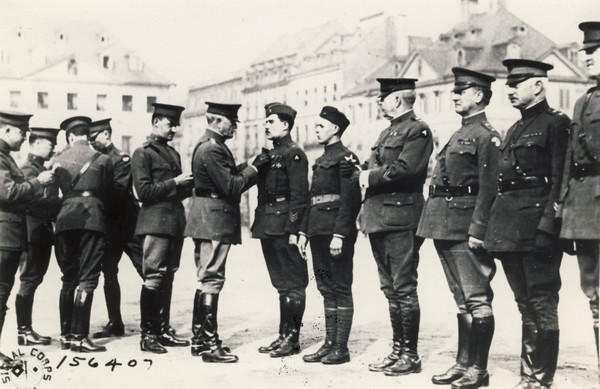
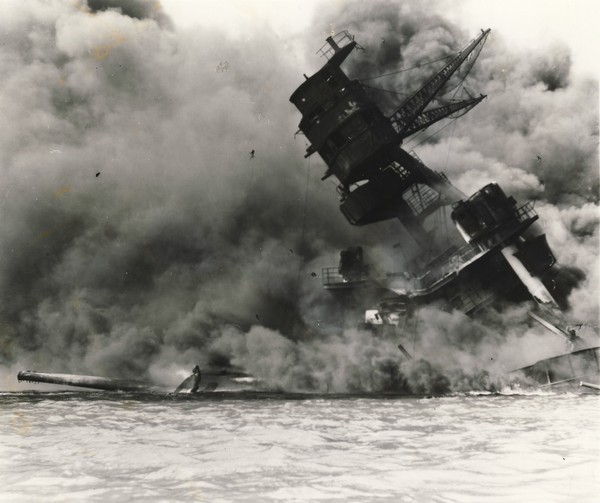
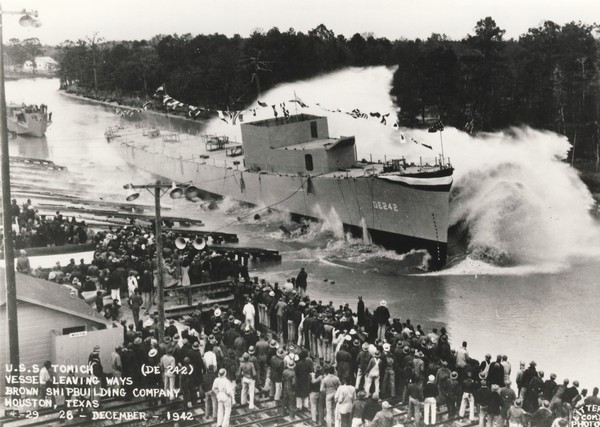
Peter Tomich vessel, 1942

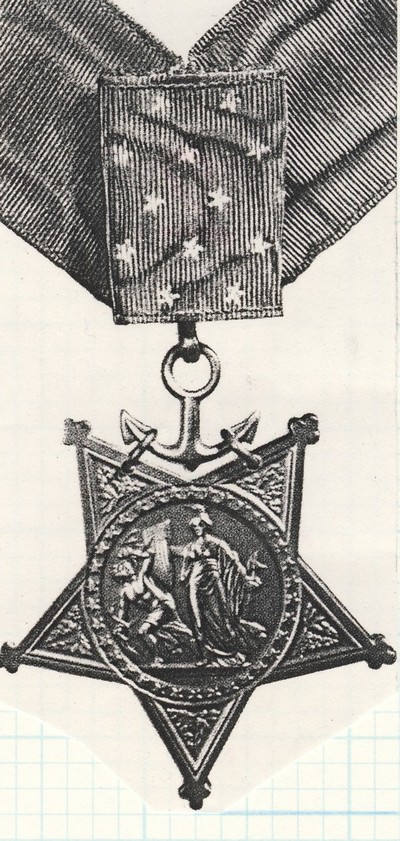
Medal of Honor for Peter Tomich by the President of the United States, in the name of the Congress
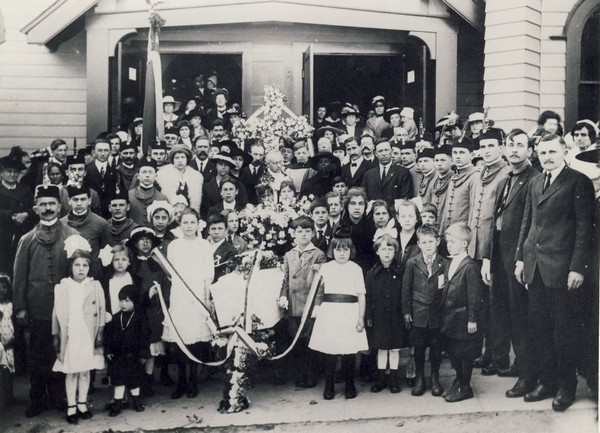
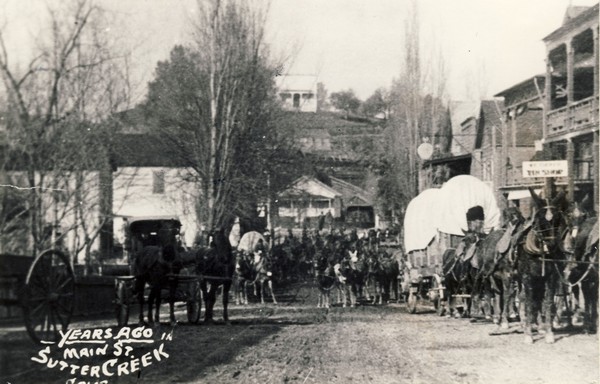
Please, go to the next page below.

| Above General John J. Pershing decorating 2nd Lt. Louis Cukela (Vjekoslav Lujo Cukela), who was awarded both the Navy and Army Medals of Honor for extraordinary heroism in France 1918 during World War I. He was the only living man to hold two such decorations for extreme bravery in a single war. Cukela was born on May 1, 1888 in Split, Croatia, son of George (Đuro) from the village of Koljane (near Vrlika) and mother Johana (Ivanica Bubrić). In 1913 Cukela emigratted to the United States and he and his brother setttled in Minneapolis, Minnesota. On September 21, 1914 he enlisted in the U.S. Army and later in 1917 he enlisted in the Marine Corps. With war raging in Europe, he went to France and took part in all the engagements in which the Fifth marines fought. In addition to the two Medals of Honor, Cukela was awarded the Silver Star by the Army; the Medaille Militaire (he was the first Marine officer ever to receive this medal), the Legion d'Honneur, the Croix de Guerre with two palms, another Croix with Silver Star by France and several other medals by Italy and U.S.A. In 1940 he was promoted to the rank of Major. Major Cukela died in 1956 and he was buried with military honors in Arlington Cemetery in March 22, 1956. |

| Above The warship U.S.S. ARIZONA which the Japanese planes sank in December 1941 at Pearl Harbur (Hawaii) with entire crew of 1177 sailors and marines. Among them were also 9 Croatians: S. Marinich, J. Borovich, W. Ratkovich, Charles and Joseph Starkovich Jr., J. Claudius, Bušić, P. Hazdovac and Beg. |

Peter Tomich vessel, 1942


Medal of Honor for Peter Tomich by the President of the United States, in the name of the Congress

| In 1916 one of the largest funerals that occured in the Los Angeles Croatian community was for John Barkigia, the 13 year old son of Kata Barkigia (Born Bogišić) from the village of Dubravica, near Dubrovnik. She was extremely active in Croatian affairs and a member of most organizations. |

| The Main Street in Sutter Creek, Amador County, California, also called the Golden Heart of the Mother Lode. It was named after John A. Sutter, the first white man to come to the area in 1846. He was the first to mine localy, but few others later managed to make success of it and made millions. The epochal event was the discovery of gold at Sutter's mill on the American River in January 1848. In the stampede of people from all over America and the world there were many Croatians. On the top of the hill on the photo we can see a nice house. This was the first Croatian Home in the USA, built in 1874. It was built by Slavonic Society organized in San Francisco in 1857. |
Please, go to the next page below.
Croatian Energy, page 5
Contents
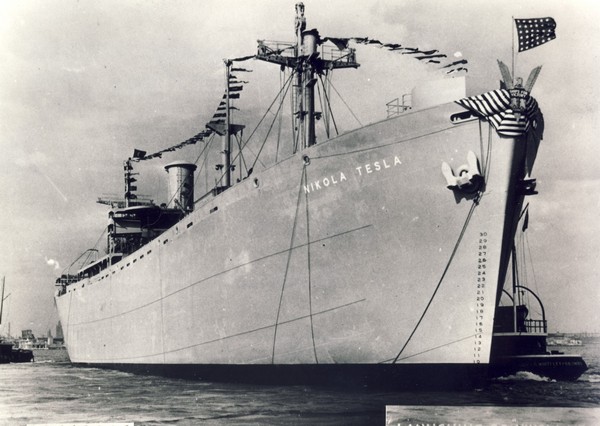

Ships for Victory
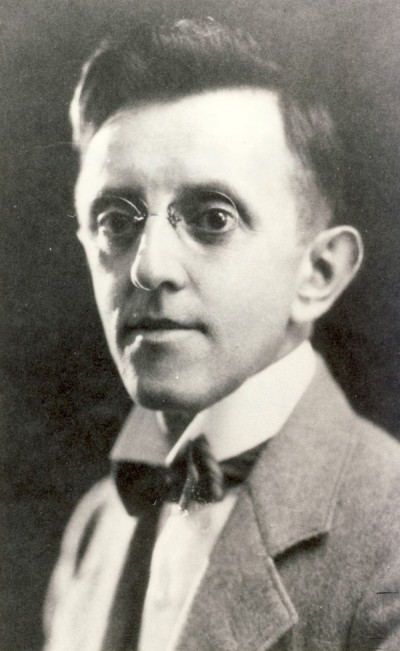
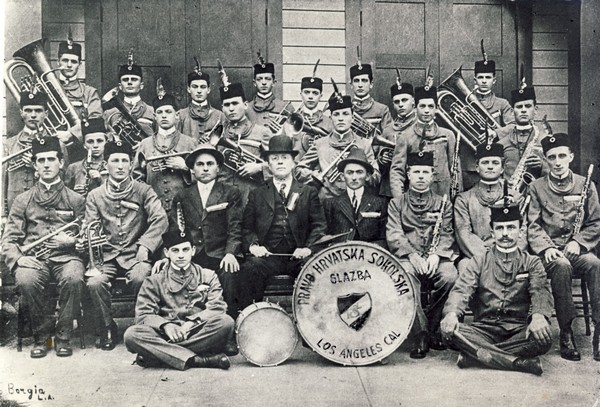
Hrvatska sokolska glazba, Los Angeles
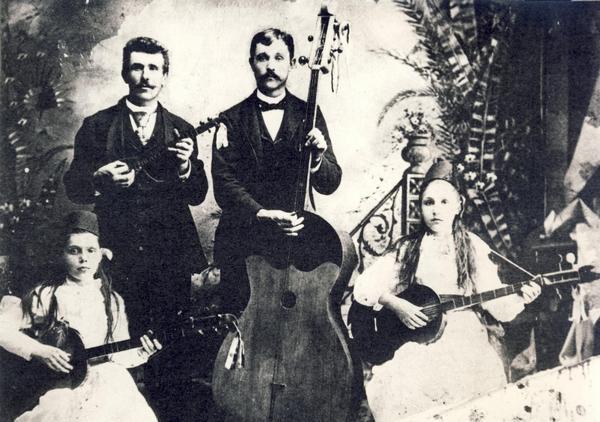
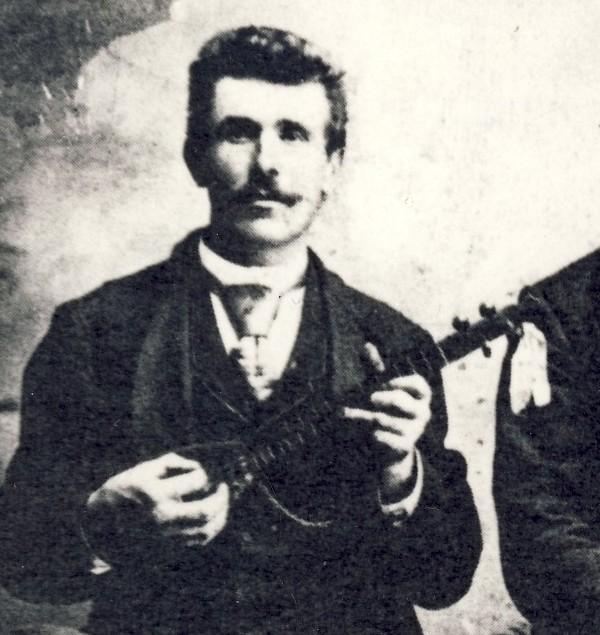

Flying Cloud
The end of Part 1

| The American ship honoring Tesla, built in 1943 at Betlehem Steel Shipyard in Baltimore. |

Ships for Victory

| For more than fifty years Emil Blazevic contributed to American and Croatian music and to the education of many good singers. He was born in Kraljevica, Croatian Littoral, in 1880; he came to America around the turn of the century. A teacher of music and singing, he had his own school of music in New York. He was an excellent singer, composer, conductor, and popularizer of the tamburitza music. Blazevic was eighty years old when he died in New York in October, 1960. Source: Adam Eterovich web site www.croatians.com |

Hrvatska sokolska glazba, Los Angeles
| A brass band in Los Angeles formed in 1917 by the members of "Sokol" (The Falcon), a Croatian patriotic organization. |

| Frank Hoffer from Karlovac (first from left) is among the first who introduced the tamburitsa instrument to America. Next to him is Paval Pavlinac and Mima and Katica Hoffer. Hoffer arrived in America in 1887 and setlled in Philadelphia with his wife. In 1891 he moved to Steelton, Pa. where a large Croatian colony was in the making. In 1893 his group performed at the Chicago World's Fair. He taught his group by rote and they always played by ear. |

| Frank Hoffer with two Croatian trademarks: tamburitsa and cravate. Note that his tamburitsa is adorned with a small white handkherchief, and each tamburitsa has a similar decoration. From www.croatians.org by Adam Eterovich: Apparently the very first introduction of tambura playing in America was linked with a man named Frank Hoffer. Born in Karlovac, Croatia, he immigrated to the United States in 1887 at the age of twenty-seven. He and his wife settled in Philadelphia where they proceeded to raise a family of four daughters. Being knowledgeable sornewhat in music and woodworking, he began making instruments by hand. In 1891, he moved his family to Steelton, Pennsylvania, and in that same year he and his troupe supposedly played in a vaudeville revue in Harrisburg. In 1893, Mr. Hoffer and his group are reputed to have appeared at the Chicago World's Fair. They also claim the distinction of performing at the first Croatian Fraternal Union Convention held in Cleveland, Ohio, at the Paval Kekic Hall. Mr. Hoffer taught the troup by rote; the group always played by ear. The performers were: (1) Mr. Frank Hoffer - Director and bisernica player; (2) Mr. Paval Pavlinac - berde; Miss Mima Hoffer - bugarija; Miss Katica Hoffer, bugarija. Later, the two other daughters, Anna and Frances, joined the group when they became old enough. Frances Hoffer placed a brac while sister Anna Hoffer played a kontrasica. All instruments appear to be home-made. The bisernica played by Mr. Hoffer is fretted Farkas-style in a series of whole and half frets. It had four strings in two courses of double strings, all tuned to the pitch of D. The berde, also home-made, consisted of four strings tuned in Gg and Dd, also of the Farkas system. The quartet contained two rhythm instruments in the form of three-toned bugarijas, one probably tuned D B G and the other tuned G D B. Thus, it appears possible that the Hoffer Family Tamburica group became the very first players of this Croatian National Instrument in America. |

Flying Cloud
| Florio Antonovich from Konavlje he came to San Francisco on Flying Cloud clipper ship in 1851. With this ship he made the record time from New York to San Francisco around Cape Horn. From www.croatians.com, Adam Eterovich: Florio Antonovich, from Konavlje, Dalmatia, Croatia arrived in San Francisco in 1851 on the famous clipper ship, "The Flying Cloud," the ship that made the record time from New York to San Francisco around Cape Horn. He was a member of the Tuolomne Society in 1853 and probably made a gold strike, as he returned to San Francisco and operated a coffee saloon and restaurant at the corner of Clay and East at 403 East Street. He listed as a capitalist in 1891 and voted in 1871. He was from Konavle. He was a Charter Member of the Slavonic Illyric Mutual Benevolent Society. He was President of the Society at one time. In 1868 he returned to his native country, and there he married a young lady from Bresecine, returned to San Francisco with his bride same year, and brought into the world a lovely family of children. He died in 1898 at the age of seventy-three. He is survived by his widow, Mrs. Florio Antonovich, daughter Mrs. Annie Ashley, and two sons, William G. Antonovich, a well-known attorney in our colony, and Emile P Antonovich, Captain in the United States army. In 1882, Mrs. Nicholas Buja and Mrs. Florio Antonovich, were selected by the Slavonic Society to raise money for the Society's new banner, Majika Slovinska (Mother Slavia). the presentation of the banner to the Society was made by two young girls, now married ladies, Mrs. Cora Maroevich and Mrs. Antionette Forrest, in old Platt's Hall, located on the Montgomery Street where now stands the Mills Building. |
The end of Part 1
Formated for CROWN by prof.dr. Darko Žubrinić
Distributed by www.Croatia.org . This message is intended for Croatian Associations/Institutions and their Friends in Croatia and in the World. The opinions/articles expressed on this list do not reflect personal opinions of the moderator. If the reader of this message is not the intended recipient, please delete or destroy all copies of this communication and please, let us know!